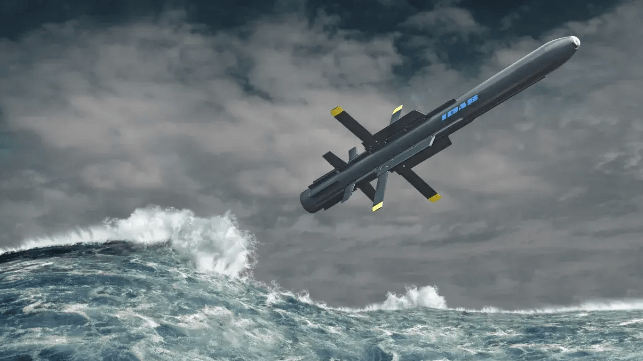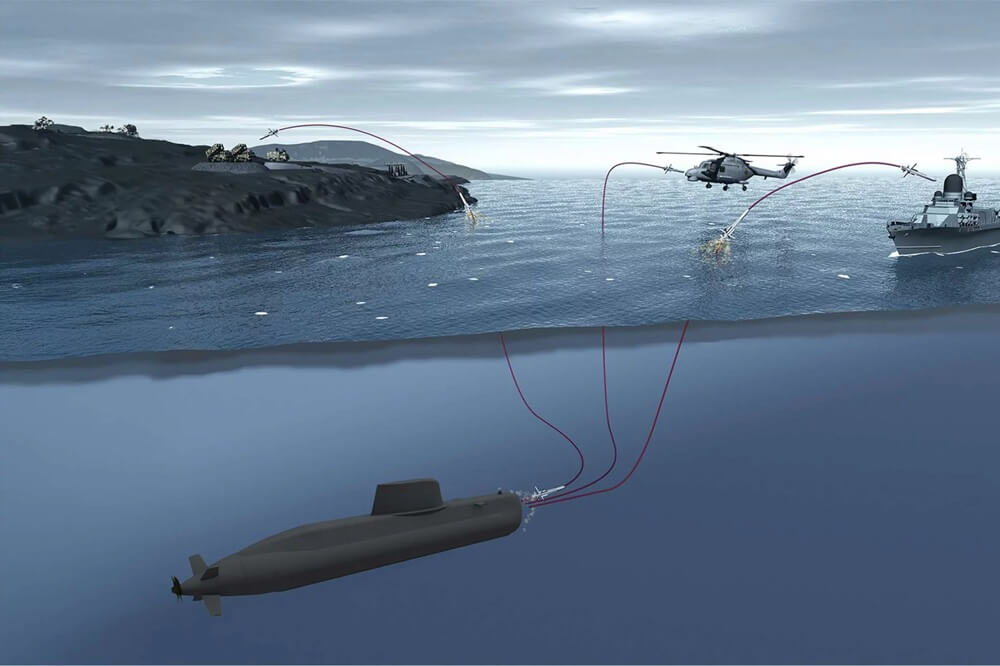Germany May Build World's First Sub With Anti-Aircraft Missiles

When it delivers in the early 2030s, Germany's next attack sub will be the only known example in the world with active defenses against sub-hunting helicopters, thanks to a procurement package passed in December.
On January 23, Thyssenkrupp confirmed that it has received long-awaited funding for the Interactive Defence and Attack System for Submarines (IDAS). IDAS is a wire-guided antiaircraft missile that can be launched underwater, and is the only publicly known weapon of its kind ever ordered. Some nations' subs have been known to carry man-portable antiaircraft missile launchers for emergency use, but a man-portable unit only works when surfaced - and surfacing removes submarines' key advantage.
Stealth is no longer enough to combat aerial threats, according to Thyssenkrupp. Capable airborne antisubmarine warfare systems have made it much harder for subs to hide and survive. Most advanced nations' surface combatants now deploy with a sonar-equipped, torpedo-carrying helicopter, which can readily track and destroy a submarine in short order. Current defenses include diving deep or hiding in the ocean's layers, but there are no publicly known active defenses that a sub can use to fight an aircraft without first coming to the surface.
Germany's navy operates some of the stealthiest diesel-electric subs in the world, and it has been working on a solution to this problem for decades. In partnership with Germany's Federal Office for Defense Technology and Procurement (BAAINBw), Thyssenkrupp, Deihl Defense and Kongsberg decided to develop an antiaircraft missile that could be launched out of a standard torpedo tube. Based on Deihl's IRIS-T air-to-air missile, the sub-launched IDAS has folding winglets and sits in a canister the size of a torpedo. Once the munition launches and reaches the surface, the operator can guide the missile by fiber-optic data link throughout its flight, aided by an infrared seeker.

Deihl Defense
Work got under way in the 2000s, and the first successful underwater test launch occurred in 2006. IDAS was so impressive that it won a national defense-tech award in 2007, and appeared slated for production in 2009. The original plan was to retrofit the system onto existing subs, and to have it in operational service by 2014.
In December 2024, ten years later, Germany's parliament signed a $5 billion funding package to build four new Type 212CD submarines for the German Navy. The package included $26 million to finish development work on IDAS, which will now make its first appearance on the 212CD.
"We are delighted that this innovation project can now also be launched. At Thyssenkrupp Marine Systems, we are contributing to a completely new capability in the field of submarine self-defense, while at the same time strengthening the safety of people and materials in challenging future deployment scenarios," said Oliver Burkhard, CEO of Thyssenkrupp Marine Systems.
